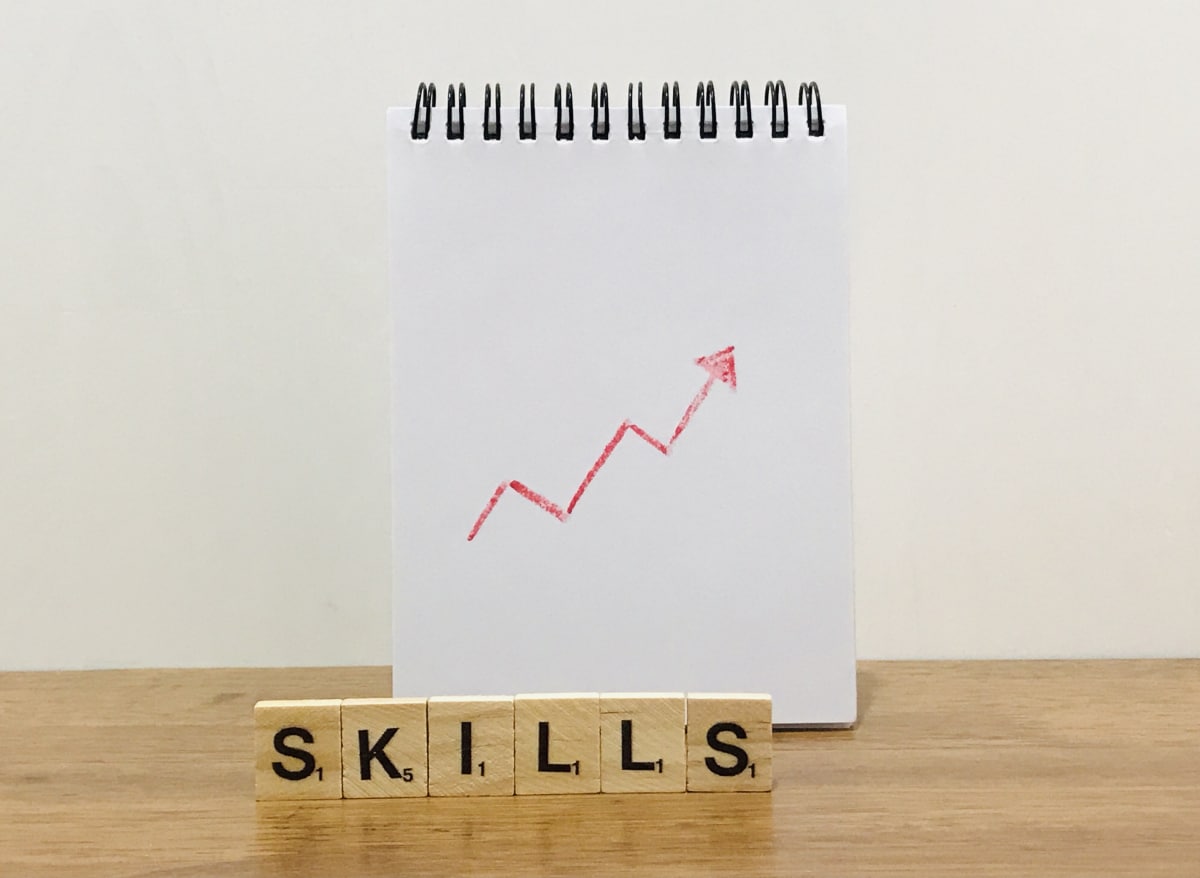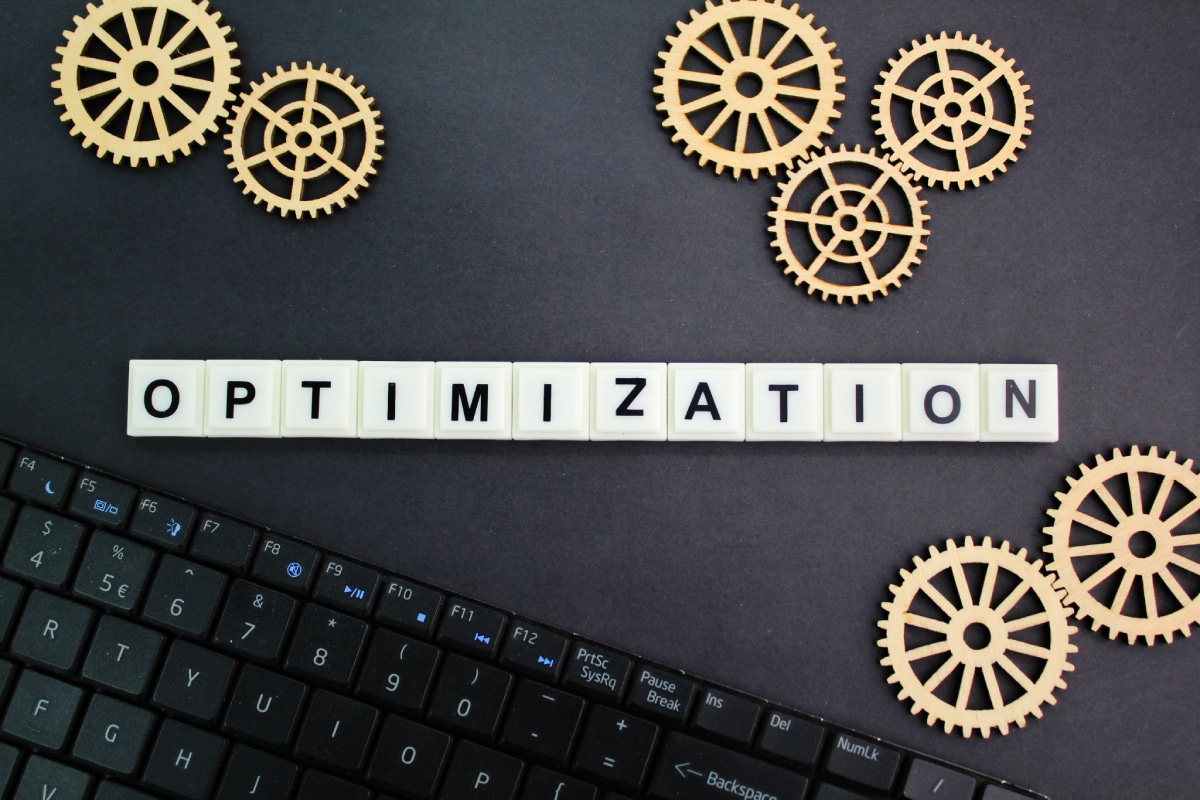Apartment Website Design: How to Create an Engaging User Experience
"Ever tried finding an apartment online, only to be put off by a complex website with confusing navigation or lackluster visuals?
If you found that situation frustrating, you're certainly not alone. It's like hunting for a key in a room filled with duplicate keys - exhausting and unproductive.
This is exactly how potential tenants feel when they visit a poorly designed apartment website. In today's competitive rental market, a real estate firm can't afford to lose leads due to a poorly designed website.
Follow along as we unlock the secret to creating an engaging user experience on your apartment website that converts visitors into happy tenants."
A well-designed apartment website should be visually appealing, easy to navigate, and mobile-friendly. It should highlight the best qualities of the apartment community through engaging copy and high-quality images or videos.
Including virtual tours or 3D floor plans can also enhance user experience and increase conversion rates. Clear and concise copy is crucial in helping visitors find what they need easily. User-generated content, such as reviews and ratings, can also help build trust with potential renters and improve conversions.
Finally, ensuring that the website's load time is quick enough for users is critical to optimize engagement on your apartment website.
Essentials of Apartment Website Design
When designing an apartment website, focusing on creating an engaging user experience should be a top priority.
An engaging website can attract and retain potential renters, leading to more leases signed and increased occupancy rates. There are several key elements that are essential in creating an effective apartment website design.
One important element is ensuring that the website's branding aligns with the apartment community's branding.
This includes using colors, logos, and fonts consistent with the community's existing marketing materials. When visitors come across the website, it should be readily apparent that it belongs to a particular property management company or apartment community.
Another key element is presenting accurate and detailed information about apartments in an easily digestible format.
This means prioritizing features that potential renters are interested in such as floor plans, amenities, location maps, and virtual tours. High-quality photography is also crucial for showcasing the unique features of each unit type and community space.
While providing clear and comprehensive information is important, considering how this information is presented is equally crucial.
Avoiding cluttered pages and confusing navigation will help visitors quickly find what they're looking for and prevent them from getting lost or frustrated while browsing.
Moving forward, let's dive deeper into specific architecture and design standards that are beneficial when designing an apartment website.
- According to a 2022 study by RealPage, approximately 94% of prospective renters use online property listing websites when searching for a new apartment, highlighting the significance of user-friendly website design.
- A Real Estate Digital Marketing survey conducted in 2023 revealed that conversion rates could increase by up to 266% through the inclusion of video tours and interactive floor plans on property websites.
- Presently, mobile traffic accounts for more than half of all internet traffic globally, making a mobile-friendly design not just an option but a necessity for effective real estate web interfaces.
Architecture and Design Standards
The architecture and design standards of an apartment website involve more than simply making it appear visually appealing – it must also be functional for both developers and users alike.
First off, using responsive design techniques helps ensure the apartment website is easily viewable on a variety of devices such as desktops, tablets, and mobile phones.
With many people relying on their phones to browse websites these days, ensuring high-quality mobile responsiveness cannot be overstated.
Additionally, considering loading times is crucial since users expect fast and seamless performance. Aim to keep the website's page weight light by compressing images, removing unnecessary code, and minimizing external calls.
Visitors are less likely to wait around for a slow-loading page or deal with other usability issues if there are other apartment websites readily available.
Another critical aspect of architecture and design in apartment website design is how space is utilized. Well-defined areas that are clearly visible can delineate different sections on a webpage and provide visual cues for users on where they can go next.
This can be likened to the layout of an actual apartment - a well-designed living space should be easy to navigate and give residents clear instructions as to what goes where.
By keeping these architecture and design standards in mind, you'll have a solid blueprint to create an engaging experience for your users no matter where they come from or how they access your content.
Colors, Layouts and Space Utilization
One of the most important aspects of apartment website design is the use of color, layout, and space. The right combination of these elements can create a visually stunning website that is both engaging and easy to navigate.
When it comes to color, dominating with just one or two colors can be monotonous. However, adding too many colors can become overwhelming for your visitors.
The key is finding a good balance between the two. For example, using neutral tones such as white, beige or light grey can make details stand out more on the page. Additionally, muted shades like pastel colors can elicit positive emotions and help visitors feel at ease.
In terms of layout, you should aim to create a well-structured site that highlights important features in a simple and straightforward way.
Some popular layouts include: banner sliders, “hero images” (full-screen photos with overlaying text), call-to-action buttons, drop-down menus and section dividers.
When it comes down to the use of space within your website design avoid cluttered or overly busy designs. Cramming every piece of information onto a single web page will only confuse users and worsen their experience; on the other hand, too much blank space can create a sense of disorganization and neglect.
For instance, if you run an apartment complex in the city center where space is limited then you could choose to use more square shapes in place of circular elements within your web design.
At the same time you could benefit from showing off imagery that emphasizes any open spaces that might be available nearby like parks or greenery.
Studies have shown that effective use of color in architecture increases positive perception by approximately 20 percent – thus when picking your palettes aim for strong combinations that tie together well with the neighboring surroundings.
It’s no secret that people are visual creatures, and by this logic there is more merit to a well-designed website than one purely focused on functionality.
However, it’s important not to forget the value of functionality in design, which should always be your top priority.
Elements such as typography, text size and spacing between lines can have a direct impact on user experience at both a conscious and subconscious level.
- When designing an apartment website, it is important to consider the use of color, layout, and space. The right balance of these elements can create a visually striking website that is easy to navigate. It is essential to find a good balance between too many colors and monotonous designs.
Neutral tones and muted shades can be used to make details stand out while eliciting positive emotions. A well-structured layout should highlight important features in a straightforward way using banner sliders, hero images, call-to-action buttons, drop-down menus, and section dividers.
The use of space within the design should avoid cluttered or overly busy designs while not leaving too much blank space on the page. Effective use of color in architecture increases positive perception by approximately 20 percent.
While a well-designed website is crucial, it's equally important to prioritize functionality elements such as typography, text size, and spacing between lines for a smooth user experience.

Enhancing User Experience Through Design
Creating an engaging interface that is both absorbing and convenient for users can enhance traffic flow through your site, while also encouraging visitors to take the right actions or conversions on your apartment website.
Firstly, using high-quality images and videos within your design can captivate visitors' attention and increase engagement.
This visual media should showcase what differentiates you from your competitors. You could use videos of an apartment home tour or an engaging 3D floor plan or Virtual Reality guide that offer incredible user experiences.
Secondly, clear navigation that guides users around your site is of utmost importance. Ensure that every webpage is clearly labeled with contextual titles so that users have all necessary information available at their fingertips as they continue through the stages of their ‘buying cycle’.
Additionally, implementing functional search capabilities can help keep potential leads interested in browsing through listings instead of directing them elsewhere where they might find the information faster and easier.
Think of designing a website as if you were building a house; just like how people desire to live in beautiful houses with unique points of interest, so too do they wish to browse beautiful websites with unique opportunities to browse amenities or make appointments.
By increasing visual appeal and functionality by employing these design techniques (and continuing to prioritize user input), you're positioning yourself ahead in the competition race towards renting out your property.
Creative Content Presentation and Search Functionality
When it comes to apartment website design, there are few elements as crucial as creative content presentation and search functionality.
The way you present your content can make or break the user experience on your website. If the information is not presented in an organized and visually pleasing manner, users will be more likely to leave your site and move on to a competitor's.
One effective strategy for presenting content is to use high-quality images and videos. This creates a more immersive experience for users, giving them a better sense of what it looks like to live in the apartments you offer.
For instance, including a gallery of photos showcasing the interior design of your units, as well as lifestyle shots of common areas, can help potential tenants envision themselves living in the community.
Another effective way to engage users is by using clear and concise copy that delivers important information quickly and succinctly.
When writing copy for your website, keep in mind that users will likely be scanning through your content rather than reading everything word-for-word. Including meaningful headings, bullet points or short paragraphs can help break up large blocks of text and make it easier for users to find what they're looking for.
Incorporating search functionality into your website is also critical for helping users find what they need quickly and efficiently. Users who can't find what they're looking for are more likely to become frustrated with your website and leave altogether.
A well-designed search feature can make all the difference because it allows users to narrow down their searches by specific parameters such as location, number of bedrooms or rent price.
For instance, imagine you were searching for an apartment near a particular school you plan to attend. A search feature could help filter out the communities that don't fit that criterion.
If you have multiple properties in different locations or complexes within one property, organizing them in a clear way is also crucial. For instance, you can use a map of your property to indicate different buildings, or create a list of amenities and floor plans available for each unit.
Think of your website as a supermarket: if the products aren't organized and easy to find, customers will quickly become frustrated and leave to shop at another store.
By providing users with an efficient search function and organizing content in a visually appealing manner, you're making it easier for them to find what they need and stay engaged with your community.
In addition, when designing your site's content, make sure that it is optimized for both desktop and mobile devices. Most people now access the internet through their mobile phones more than their computers.
A responsive web design ensures that users have a seamless experience on their device regardless of size. Furthermore, it's essential to ensure that the content on your website is updated regularly. Outdated images or text could inadvertently mislead users, rendering them disappointed.

Evaluating Your Apartment Website's Interface
Once you've designed a website with creative content presentation and effective search functionality, it's time to evaluate how well users are engaging with your interface.
Evaluating user behaviour can help you identify areas of improvement, allowing you to tailor user experience even further.
One way to evaluate user engagement is by analyzing the time spent on each page. If certain pages have low visit durations compared to others, they may need revisions to increase user engagement.
Analyzing page visits can also reveal whether or not users are finding the information provided helpful.
Another metric that apartment websites can use to determine user engagement is the click-through rate (CTR). This measures how often users click on links or ads within a specific page on your site. A high CTR indicates that users are interested in learning more about what your website has to offer.
You might also want to analyze bounce rates. The bounce rate is the percentage of users who exit your website after visiting just one page. A high bounce rate can indicate that users aren't finding what they're looking for on your site, thus registering more as a missed opportunity.
For example, if a large number of users leave after visiting your community's amenities page, you may want to consider redesigning that page or rearranging its contents to increase user engagement and dwell time.
Another metric commonly used in apartment website design is conversion rate optimization (CRO), which analyzes how often users complete specific actions on your website such as scheduling a tour, filling out an application or requesting tenant portal access.
CRO can help you identify areas where potential tenants are dropping off within the sales funnel, allowing you to revise those areas for better results.
On the other hand, some may argue that these metrics alone are insufficient in capturing user intent. By only tracking surface-level behaviours like click-through rates and visitor duration it may not be clear why someone did or didn't complete an action - whether it's because they found what they needed quickly or couldn't find what they came for altogether.
To circumvent this predicament, initiating interactive qualitative feedback surveys on content and functionality could solicit meaningful opinions from users and provide critical information that otherwise won't be obtained by typical metrics analysis.
By implementing these evaluation methods, you'll be able to hone in on areas of weakness in your website design and improve upon them over time. Remember: Your apartment website is a hub for engaging with potential residents always aim to make their journey to rentership smooth and intuitive.
Navigation and User-Friendly Features
Navigation is an essential aspect of any website. It can significantly impact the user experience, ultimately affecting your apartment community's conversion rates.
User-friendly features that make it easier for users to find what they are looking for can ensure that potential renters are more likely to move forward in their rental journey.
One crucial aspect of navigation design is having clear, concise labeling for menu options and buttons. When labels are vague or confusing, visitors may feel frustrated and leave the site altogether. Including a search bar on the homepage or at a prominent location on every page can also make it easier for users to navigate your site.
For example, suppose a visitor lands on your website with specific questions about amenities or locations. In that case, they should be able to quickly find those sections regardless of where they are located on the site.
Another user-friendly feature is the use of breadcrumbs. Breadcrumbs indicate the path taken by visitors through a website hierarchy from the home page to their current page and provide shortcuts for returning to higher-level categories.
This feature is especially useful for returning visitors who may have trouble retracing their steps within your website's menu structure.
Ultimately, designing navigation elements with your audience in mind will make your website more intuitive and user friendly.
Navigation speed and efficiency play an enormous role in user experience. Slow loading times or too many clicks needed to access relevant information will frustrate users and may lead them to turn to other properties instead.
In addition, websites designed with accessibility features for visually impaired users can also improve overall usability. Screen readers and contrasting colors schemes are just some of the tools available to help ensure everyone can quickly navigate your website.
Investing time and resources into testing different navigational styles could prove invaluable in making sure you provide potential renters with the best user experience possible.
One argument against investing heavily in this aspect of website design is that users may be more interested in the overall aesthetic or visual appeal of your site. While this is undoubtedly important, many users are willing to overlook poor visual designs in favor of ease and efficiency of use.
Think of navigation as a roadmap for your users. Imagine you've been given directions to an unfamiliar location but during the journey, the signage disappears, and no one's around to help you find your way.
How would you feel? The same principle applies to website navigation; if visitors can't find what they're looking for or get lost along the way, they are likely to become frustrated or even give up on pursuing a rental altogether.

Optimizing Your Website for Better Engagement
While a website's aesthetics can initially draw potential renters in, ultimately, user engagement will depend on how easy it is for visitors to interact with your content.
One effective strategy is to introduce interactive features such as virtual tours, floor plans, and high-quality photos of amenities. These types of features create an immersive experience and provide insights into what potential renters can expect from your community.
Research has shown that visual storytelling through videos can increase user conversion rates by up to 80%. Providing engaging and quality visual content can also enhance social sharing and improve visibility in search engines' results pages.
Another way that apartment communities can increase engagement is by incorporating social proof elements throughout their website.
User-generated reviews and ratings allow prospects to hear directly from other tenants about their experiences living there, which helps build trust and credibility with your website visitors.
Additionally, including resident portals where tenants can easily manage payments or submit maintenance requests through an online system provides convenience and an added incentive for prospective renters who want hassle-free renting.
Finally, keeping your website regularly updated can stimulate continued engagement while fostering a sense of community among existing tenants. Posting regular blog posts with apartment living tips, featuring your community's events, or providing relevant industry news will keep visitors coming back for more.
Some may argue that these features are not essential to driving engagement or worse, could detract from it by slowing down load times.
However, research has shown the benefits of incorporating quality visual content and user-generated reviews in particular can prove invaluable in helping potential renters feel connected to your community before even stepping foot on your property.
Engagement is a two-way street that must cater to the audience's interests and needs. Think about visiting an apartment for the first time and finding it impossible to get any sense of its layout or what amenities might be offered.
The same applies to website design; visitors should leave feeling like they have gained valuable insights into what renting at your community would look like and how their needs would be met.

